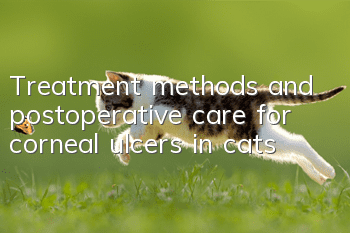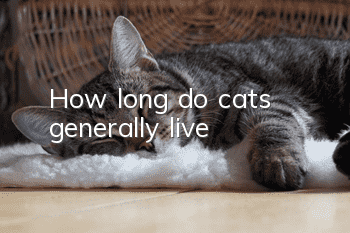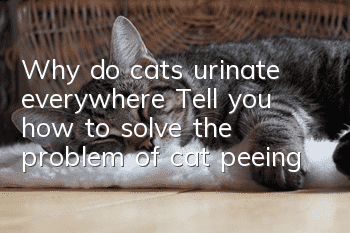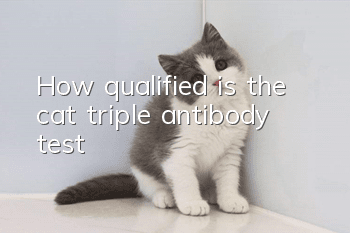Treatment methods and postoperative care for corneal ulcers in cats

The cat’s cornea is located at the front of the eyeball and provides the main focusing function for the eyeball. In order to maintain its light transmittance, it has no blood vessels and nerves. The corneal cells’ nutrition source depends entirely on tears and atrial fluid. When corneal epithelial cells are hypoxic, tear film abnormalities or insufficient tear secretion, and collagen fibers are irregularly arranged, the cornea will be damaged.
1. Corneal ulcers in cats
Corneal damage can cause corneal ulcers. According to the depth and cause of corneal ulcers, they are divided into superficial, erosive, and superficial corneal ulcers. Superficial ulcers are damage to the corneal epithelium and basement membrane, while erosive ulcers are Intractable corneal ulcer, also known as intractable corneal ulcer.
Cat eye diseases have many characteristics that are different from other diseases. The course of the disease changes very rapidly. It sometimes only takes 1 to 2 days from itching and tearing to keratitis. When the condition is severe and cannot be recovered, corneal inflammation can lead to corneal ulcers or perforations, and eventually blindness, and the eyeball may even have to be removed. Moreover, when cats have eye discomfort, owners often think it is not serious and wait a few days to check, or they take human eye drops or eye drops from the previous treatment and inject them directly into the eyes incorrectly. These behaviors not only delay treatment, but also cause eye discomfort in cats. Extravagance will aggravate the condition.
2. Treatment of corneal ulcer
For milder corneal ulcers, most can be healed through conservative treatment, using drugs that promote corneal healing or simple third eyelid covering surgery; for severe corneal ulcers, pet doctors often use bulbar conjunctival covering for dogs. technique. However, because the cornea is larger in cats than in dogs, it is difficult to perform conjunctival covering surgery. Currently, commonly used clinical surgical methods include corneal debridement, corneal lattice incision, corneal surface resection, etc. The purpose is to remove unhealthy tissue around the lesion. Generally, 90% of cases recover within 7 to 10 days after surgery. , very few will perform a second operation. When treating some special cases, we can also wear contact lenses on the animals to help the corneas heal. Generally, the animals need to stay quiet. If the animals resist, appropriate sedation can be given.
As shown below, this cute cat underwent corneal ulcer treatment. It underwent corneal surface resection surgery, combined with conjunctival flap covering surgery, but it took nearly two months of treatment with drugs, corneal emery burs, etc. , the ulcer still failed to heal. Considering that a long course of the disease may lead to the occurrence of necrotizing keratitis, after communicating with the animal owner, a superficial corneal resection was finally performed to remove the unstable epithelium and stromal tissue, and finally a conjunctival flap was performed. Cover-up surgery.
In fact, refractory corneal ulcers in dogs are very common clinically, but refractory corneal ulcers in cats are really rare. Because persistent corneal ulcers in cats may be related to herpes viruses, this potential should be fully considered when deciding whether to use keratotomy. whenWhen viral infection can be ruled out, corneal lattice incision is the prerequisite for deciding to perform corneal surface resection surgery.
3. Nursing
No matter what method is used to treat corneal ulcers, cats must wear Elizabethan rings to prevent the animals from damaging themselves. When dripping medicine every day, the secretions of the affected eye should be cleaned first to avoid reinfection. For cases of corneal ulcer after lattice incision, a fluorescence examination of the affected eye should be performed after 2 to 3 days to understand the healing status. Generally, after Go to the hospital for review one week after discharge.
- What should I do if a male leopard cat doesn’t want to mate with a female cat?
- Can cat tear stains be removed?
- Can cats eat roast duck?
- Are tabby Siamese cats a hybrid?
- Kittens like to step on my face? What does it mean when a cat keeps stepping on my face?
- How to judge a cat’s stress response?
- Does a female blue cat have gills?
- What should Shandong lion cats eat? Don’t feed cats too casually
- What happens if a cat is depressed?
- How long does it take for a cat’s rabies vaccine to take effect?



